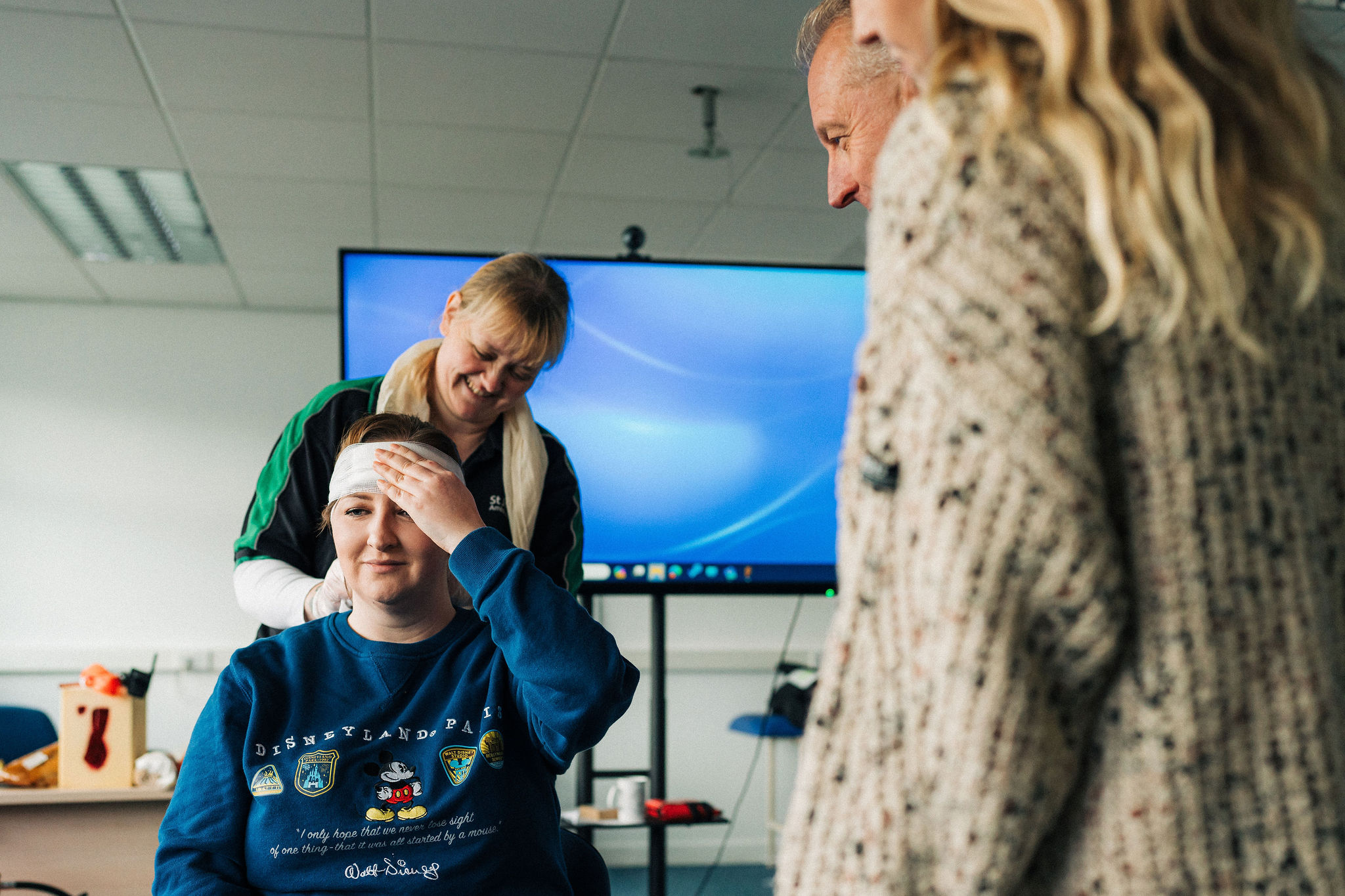How to Perform First Aid on an Adult with a Head Injury

All head injuries are potentially serious because they may damage the brain. A head injury may cause damage to the brain tissue, a skull fracture or an injury to the spine or neck.
if you're looking for advice on head injuries in children and infants, see our dedicated page.
Minor head injuries
What to look for
- any loss of responsiveness
- scalp wound
- dizziness or feeling sick
- loss of memory of events before or during the injury
- headache
- confusion
What to do
Follow the steps below
Step 1
If they are responsive, sit the casualty down and hold something cold against the injury to help reduce the swelling, like an ice pack or a frozen bag of vegetables wrapped in a tea towel.
Step 2
While you do this, try and assess the casualty’s level of response using the AVPU scale:
- Alert - Are they alert? Are their eyes open?
- Voice - Can they respond to you if you talk to them? Can they answer simple questions?
- Pain – Does the casualty respond to pain? If you pinch their ear lobe, do they move or open their eyes?
- Unresponsive - Are they unresponsive to all the above? If they are unresponsive or you are worried, call 999 or 112 for emergency help
Step 3
If they have any wounds, treat them by applying direct pressure to the wound. Secure with a dressing if needed.
Step 4
Keep monitoring their level of response. If they are alert and responsive and have always been so, their head injury is probably mild. You or another responsible adult should wait with them until they recover.
If they’re not alert or responsive or they appear to be confused, their head injury could be more serious. Call 999 or 112 for emergency help and explain the cause of the injury and give them details of the casualty’s response to the AVPU scale.
If they become unresponsive at any point, open their airway, check their breathing and prepare to treat someone who’s become unresponsive.
Step 5
If their injury has been caused by a sporting incident, make sure they do not return to the sport until they have been fully assessed by a medical practitioner.
Step 6
Advise the casualty to seek medical help if the head injury appears to get worse or if any of the following apply:
- they are over the age of 65
- they had previous brain surgery
- they are taking anti-clotting medication
- they have been taking drugs or drinking alcohol
- there is no one responsible to look after them.
Severe head injuries
Some head injuries can be much more serious that a simple bump to your head.
What to look for
If someone has had a serious head injury, they may have:
- experienced a severe blow to the head
- increased drowsiness
- persistent headache
- dizziness and confusion
- loss of balance or memory
- difficulty speaking or walking
- vomiting episodes
- double vision
- seizure
- deteriorating level of response
- unresponsive
- blood or blood stained watery fluid coming from the ear or nose
- unequal pupil size
What to do
Follow the steps below:
Step 1
If you think someone has a serious head injury, call 999 or 112 for emergency help and tell ambulance control that you suspect a serious head injury.
Step 2
While waiting for help to arrive, ensure their airway is open and clear, keep checking their breathing and prepare to start CPR if necessary.
Step 3
Try not to move the casualty from the position you found them in, as they may have a spinal injury. Only move them if they are in danger.
Step 4
Continue to monitor the casualty, watching for any changes in level of response.
